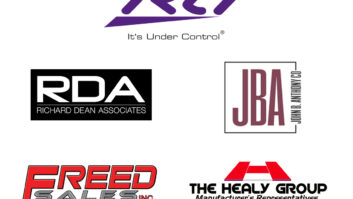Even in good times, gauging consumer sentiment and forecasting fourth- quarter sales amounts to an educated guess at best.
Now, in the aftermath of Sept. 11, and in anticipation of America’s tactical response, predicting holiday spending becomes a crapshoot.
Still, despite the uncertainty, retailers, suppliers and analysts have managed to form a sales consensus of sorts, and their outlook — particularly for consumer electronics and major appliances — generally ranges from dim to grim.
Qualifying their conjectures by stressing the unprecedented nature of last month’s events and the unknown outcome of U.S. military actions, industry observers nevertheless agree on three points:
- 1. Consumers are scared.
- 2. Discretionary spending on high-price-point products has slowed.
- 3. Holiday sales will suffer.
Much of the dour forecasts are predicated on the 16.4-point plunge in The Conference Board’s consumer confidence index for September, which represents the biggest monthly drop since the Gulf War. According to director of consumer research Lynn Franco, the survey responses, culled both before and after Sept. 11, reflect the attacks, accelerated corporate layoffs and, ostensibly, the steep stock market sell-off. Expectations for the next six months, she added, “were much more pessimistic.”
Although September’s confidence index remained well above the recession-era readings of 1991-92, the figures, argued Todd Smith, a channels program analyst for market research firm ARS, Inc., reflect a “bunker mentality” that could finally lead to a full-fledged recession. “Consumer spending has been credited with keeping the U.S. out of a recession for the past year,” he observed, “and confidence is generally seen as a good barometer for predicting future spending activity.”
The siege mentality is also reflected in the kinds of things consumers are buying. Although Wal-Mart said same-store sales returned to pre-attack levels following a 10-percent plunge on Sept.11, shopping carts were largely filled with lower-priced basics like shoes, household chemicals, pharmacy items and housewares, rather than bigger-ticket purchases like fashion or electronics.
Tracy Mullin, president/CEO of the National Retail Federation (NRF), a retail trade group representing all store formats and channels of distribution, confirmed the trend. “With a few notable exceptions such as American flags, consumers are currently focusing on basics, buying out of necessity, not desire,” she said.
Citing the “continuing psychological and economic impact” of last month’s events, the NRF has nearly halved its forecast for fourth quarter sales growth from 4 percent to 2.2 percent for full-line merchants and specialty stores including electronics and appliance dealers.
“Needless to say, circumstances are not the most positive for the upcoming holiday season,” observed NRF chief economist Rosalind Wells. Following indications in August and early September of a retail resurgence later this year, sales stalled, “killing any chance for a rebound in the third quarter.” And while much of the way consumers will spend their holiday money will be determined by forthcoming events, Wells believes sales of big-ticket household merchandise and appliances will likely suffer.
“Retailers facing the toughest business will include computer and software stores, furniture stores and TV/radio/electronics stores,” she surmised. “Discount department stores, warehouse clubs and superstores will probably fare better.”
Well’s scenario is already taking shape. Last month, high-end A/V specialist Tweeter Home Entertainment Group announced expectations for a flat Christmas following a 20 percent drop in September sales at its Sound Advice subsidiary, and “substantial” declines throughout the Northeast (see story, p. 45). But category killer Best Buy said it has no plans to revise its upbeat financial projections despite the sales dip on Sept. 11.
Likewise, UBS Warburg managing director Aram Rubinson made only modest trims in his earnings forecast for Best Buy, “given its ability to meet adversity head on, especially of late.” Still, Best Buy, like Tweeter and Circuit City, for which he saved his deeper estimate cuts, falls into what he called “the discretionary camp.”
He observed in a recent research note, “A sorrowful nation, coupled with rapidly declining equity values, creates the potential for some short-term weakness in demand here.”
Still, not all is gloom and doom. Senior economists at market research firm Retail Forward believe the impact of the tragedy on fourth quarter sales will be limited to a decline of 1 percent over pre-attack projections, and that e-tail sales will actually grow 30 percent as more consumers shop from home. (Indeed, online sales returned to 89 percent of normal volume on the Monday following Sept. 11, according to BizRate.com.)
Moreover, Retail Forward predicts that merchants selling home goods, including CE, furniture and home improvement stores, should see some benefit from persisting strength in the housing market.
That view was confirmed by Marty Friedman, a principal of high-end majap distributor Eastern Marketing Corp., who noted that sales within his Northeast territory “are still very strong and holding up better than any other region.” More positive white goods news came from Maytag chairman/CEO Ralph Hake, who said in the week following the attacks, “Up to this point our order rates have held up well.”
But the biggest booster of all was Robert Verdisco, president of the International Mass Retail Association (IMRA). “Other retailers may predict a dismal future, and unfortunately the news media seem blinded by that pervasive mentality,” he declared. “We believe that people are anxious to return to the marketplace. The collective power of consumers is truly astounding, and this power will contribute to our nation’s strength.”
Q4 Retail Sales Growth












